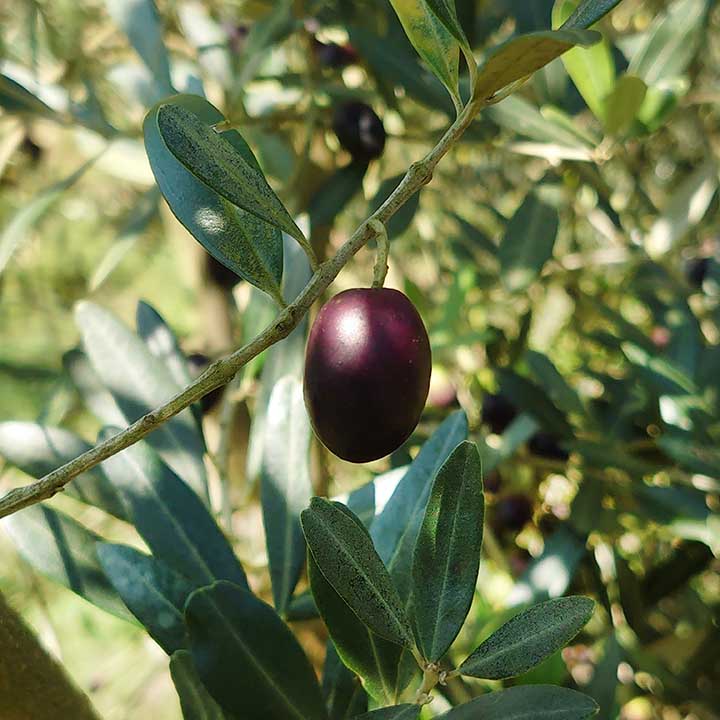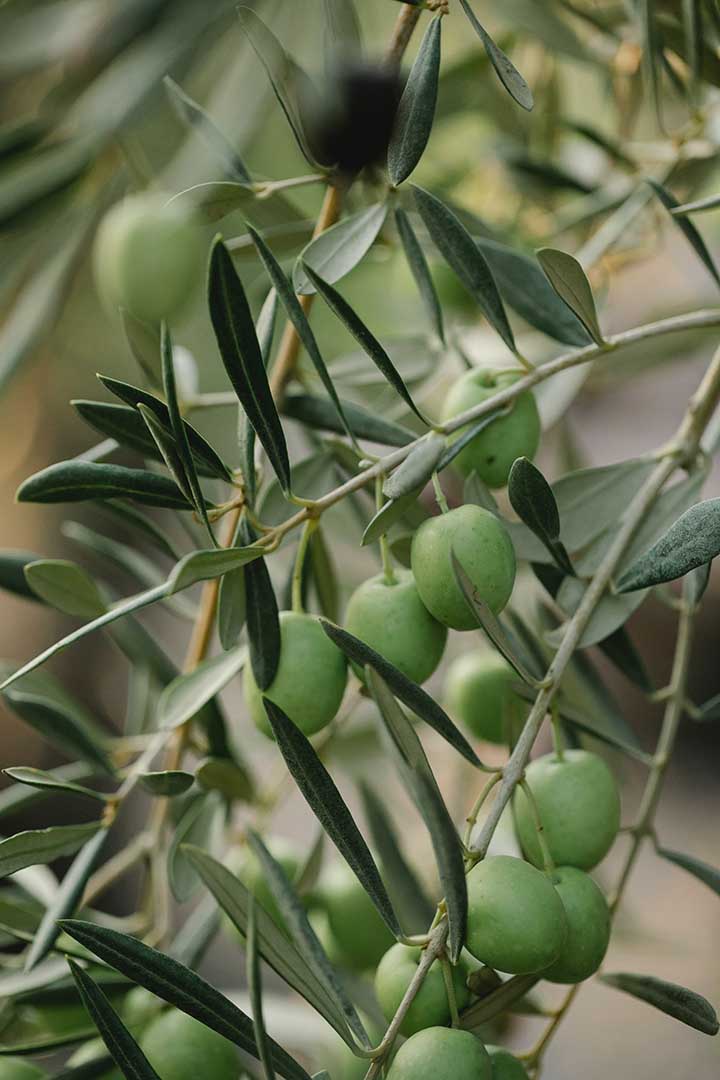Olive trees (Olea europaea) have been grown by humans for thousands of years. An olive tree can grow 10-40 feet tall in the ground and live for 500 years. In pots, olive trees grow smaller and live for about ten years. If you have problems with your olive tree, you may wonder, “Why are my olive tree leaves curling?”
Lots of things can cause leaf curling. However, unless you know the cause, it is difficult to treat your tree’s problem.
Why Are My Olive Tree Leaves Curling?
Your olive tree leaves are curling because of the growing conditions, pests, or diseases. Growing conditions include being rootbound, watering, temperature, fertilizer, and pesticide burns. Pests include the olive bud mite, leafrollers, thrips, mites, aphids, mealybugs, and scale insects. Diseases include olive knot and verticillium wilt.
Table of Contents
Symptoms, Reasons, and Solutions
Three main types of problems cause leaf curl in olive trees. These are cultural problems, pests, and diseases. This guide does not discuss issues that do not cause leaf curl.
Cultural Problems
Cultural problems are caused by how you take care of your olive tree. Many cultural problems are similar in olive trees planted in the ground or in pots.
However, indoor and outdoor potted olive trees have a few problems in ground olive trees do not.
Root bound
When potted olive trees are root bound, they cannot grow enough roots to send water and nutrients to the leaves.
In extreme cases, the roots grow in a circle and girdle the tree, killing it.
In less extreme cases, the leaves turn yellow and drop off.
To solve this problem, repot your olive tree every three years with a bigger pot and fresh potting soil.
Water Problems
Water problems affect potted olive trees more than inground ones. If the olive tree does not get enough water, the leaves will curl, turn brown, dry, and then fall off.
The leaves will turn yellow and fall off if the olive tree gets too much water.
Potted olive trees would be watered when the soil is dry. Water until water runs out of the drainage holes. Do not let the pot sit in water for more than 15 minutes after you water it.
Young inground olive trees need to be watered when the top of the soil is dry for the first year. After that, established olive trees need to be watered deeply monthly.
Transplant Shock
When an olive tree is transplanted from a pot to the ground, it can get transplant shock. The leaves curl and fall. The olive tree does this because the roots cannot support all the foliage on the tree.
Water the tree frequently daily first two weeks after transplant. After that, water the olive tree when the soil gets dry.
Temperature
Olive trees naturally drop their leaves when the temperatures get cold. Leaves often curl before turning brown and falling off. When there are large temperature fluctuations between the night and day temperatures, the edges of the leaves curl and turn brown.
To fix that, put the olive tree somewhere out of drafts and away from vents.
Sunlight
Lack of adequate sunlight will cause the leaves to turn yellow and curl. Olive trees need at least six hours of sunlight a day.
If you do not have a place indoors that gets that much sunlight, you can use a full spectrum grow light during the day instead.
Chemical Burns
Some chemicals will cause olive tree leaves to curl and die. If the tree gets too much fertilizer, it will cause the leaves to turn brown and curl, then fall off.
If your olive tree gets glyphosate or 2,4-D on it, both common herbicides, the leaves will curl and turn black. Dormant oil can cause leaves to burn, curl up, and blacken when the leaves are exposed to the sun and high temperatures.
To avoid chemical burns, be very careful to follow the label direction on all fertilizers and pesticides you use around your olive trees.
When applying herbicides, choose a calm day and make sure the herbicides do not drift over the olive trees. Do not use herbicides around the olive trees, as they can kill your tree.
Pests
Several pests cause olive tree leaves to curl. Here are the most common ones.
Olive Bud Mite
The olive bud mite (Oxycenus maxwelli) causes leaf curling when it infects the leaf bud. This microscopic mite sucks the sap out of the leaves in the bud, causing them to be deformed and curl when they grow. These pests are predominantly a problem outdoors.
Leafroller
The larvae of certain tortricid moths roll leaves around themselves for protection from predators. They then eat the leaves without having to worry about birds eating them. These pests are rare indoors.
Sap Sucking Insects
Aphids, mealybugs, scale insects, thrips, or mites attack olive trees indoors and out. All of them suck the sap out of the leaves, which can cause them to curl. They also often have yellow spots that turn brown. Silver trails through the leaf are another sign of a sap-sucking insect or mite.
Olive bud mites and leafrollers seldom damage enough leaves to cause a problem for the olive tree. However, sapsuckers such as aphids, mealybugs, scale insects, thrips, or mites can negatively affect the tree.
Neem oil will kill all of these pests. However, neem oil cannot be used when it is hot, or it will cause phototoxicity and burn the leaves.
Pyrethrin will also kill these pests and has no heat restriction, but it will also kill beneficial insects.
Diseases
Two diseases cause olive leaves to curl.
Olive Knot
Olive knot causes large galls on the tree that block water flow, so the leaves turn brown and fall off. Severe cases can kill the olive tree. Outdoor trees are the most vulnerable.
To prevent olive knot, spray the tree with a bactericide in the fall after harvesting any olives. Then, make another preventative spray in early spring. Olive knot enters olive trees through wounds in the tree or contaminated tools.
Verticillium Wilt
Verticillium wilt is a fungus that infests the vascular system of the olive tree. The fungus blocks the flow of nutrients to the leaves, which yellow, wilt, and curl.
Verticillium wilt is hard to treat. However, pruning the affected areas can prolong the tree’s life. Plant resistant varieties of olive trees and keep them vigorous so they can resist the fungus.
Tips for Preventing Leaf Curling

Here are some tips to prevent problems that make your olive tree leaves curl.
- Inspect your tree weekly. The earlier you find a problem, the more likely you are to be able to treat it successfully.
- Invest in a moisture meter. A meter is inexpensive and will help you know when to water the olive tree.
- Check your potted olive tree for pests before you move it indoors for the winter.
- Always sterilize your tools before working on your olive tree and between trees.
- Do not replant an olive tree where a tree has died of disease within the last year.
- Keep weeds removed from around your olive tree, as they can steal nutrients, water, and sunlight. Many weeds also harbor pests that will attack your olive tree.
In summary, the leading causes of olive tree leaf curl are cultural problems, insects and mites, and diseases. Providing the proper care for your olive tree and catching any problems early is your best chance to treat or prevent problems.
